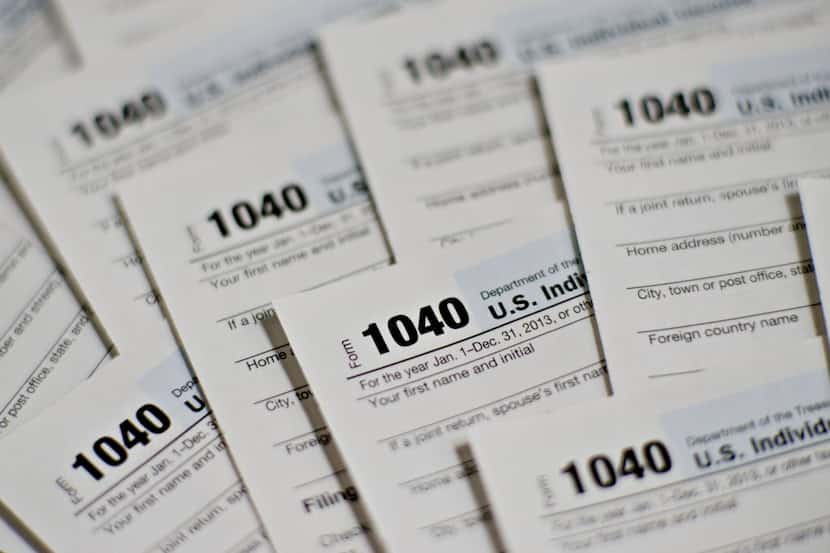
Leave it to the government to discourage marriage. Especially when marriage rates are already cratering.
As families around the country file taxes this month, they might not realize that often their marriage leads to higher taxes than if they were single. These penalties range from light to heavy, depending on their household income, number of children, and whether both or only one spouse works.
A recent study by the Atlanta Fed found that the average lifetime net marriage tax is 2.69%. The rate rises to 3.71% on the lowest income bracket (earning up to $26,000 a year) and falls to 1.49% for the highest bracket (earning more than $103,100 a year). Notice that the average marriage penalty imposed on people with low incomes is roughly twice that incurred by the rich.
This might not sound like much, a few percentage points here and there. But for low-income women, this nets out to losing $60,000 over a lifetime, according to the Fed. Put another way, this is the equivalent of wiping out four years of full time work at the federal minimum wage level for a mom who says “I do.”
On the lower end of the income spectrum, the marriage tax is an implicit tax that comes primarily from losing means-tested benefits such as the Affordable Care Act, Medicaid and the Children’s Health Insurance Program, Social Security, Supplemental Security Income, and Temporary Assistance for Needy Families. For middle-class and upper-income women, the marriage tax is more a function of how Social Security benefits are calculated and higher income tax rates for secondary earners.
The result? Well, you’ve heard the adage, if you tax something, you get less of it. That’s true for work, pollution, cigarettes and, yes, it’s true for marriage. Marriage rates among low-income mothers — the most impacted by the marriage tax — would be 14% higher, according to the Federal Reserve, if marriage penalties were eliminated. That’s a huge number, representing millions of marriages.
In my former American Enterprise Institute colleague and scholar Brad Wilcox’s new book, Get Married: Why Americans Must Defy the Elites, Forge Strong Families, and Save Civilization, he cites a 2021 poll in which more than 1 in 10 unmarried Americans earning under $50,000 say they are avoiding marriage because of losing government benefits.
Even if the real-life impact is less than econometric models or polls suggest, having government tax and transfer programs that discourage marriage is a bad idea. Marriage rates in America have never been lower; they don’t need any additional downward pressure, real or imagined.
But marriage isn’t the only thing impacted by how we’ve chosen to calculate taxes. Having two earners in a married household is also discouraged. This despite the majority of married households having two earners in them for the last half-a-century, as the Manhattan Institute’s Robert VerBruggen points out in a forthcoming paper, which I was able to preview. In contrast, single-earner married households might actually experience a marriage benefit.
Consider that if a woman pushes past the marriage penalty, she’ll find herself facing a new calculation for whether it makes sense for her to work. And I’m not just talking about whether to work when kids are young. I’m talking about if it makes sense for her to work at any point in her married life. This choice is especially discouraged for low-income women.
According to a recent study by Melissa Kearney and Lesley Turner, a family with a primary earner who made $25,000 a year would take home less than 30% of a secondary earner’s wages because of taxes and the phase-out of benefits, such as the Earned Income Tax Credit.
But tax penalties exist for working women who marry high-earning men too (hardly a sob story, I realize). Benefits and deductions aside, a single woman entering the workforce would pay a 10% tax rate on her first dollar earned. A married woman whose husband earns $200,000 would enter the workforce as a secondary earner and face a 24% tax rate on her first dollar. This makes the part-time job quite unappealing, even though 40% of married mothers prefer part-time work, according to data from the 2018 Global Family and Gender Survey.
Add kids into the picture, and this might be one of the reasons why stay-at-home mothers tend to be married to either low-earning or high-earning husbands, with fewer married to middle-income earners: a U-shape if you will. Mothers married to low-earners stand to lose considerable benefits if they work, whereas mothers married to high-earners face steep tax rates, not to mention child care costs. There are numerous tax and child care scenarios in which married women could actually lose money by working after accounting for higher taxes and work-related expenses.
Apparently, the only way to win in our tax code is to stay single with kids or to take turns with your spouse in the labor force.
Here’s the good news: We can work to eradicate marriage penalties throughout government programs, but it will cost money. We could have longer phaseouts for programs. We could have a honeymoon period wherein mothers could stay on previous benefit programs for a season after they get married, as Ethics and Public Policy Center’s Patrick Brown has recommended. Or we could provide threshold extensions to families with children under 5, as Wilcox recommends.
Ultimately, we could move to a more individual system. VerBruggen writes that ultimately we “want the tax system to allow parents to make the right decisions for their own families and treat all types of families as fairly and neutrally as possible.” I agree.
This tax season we’re reminded that ours is far from that.
We welcome your thoughts in a letter to the editor. See the guidelines and submit your letter here. If you have problems with the form, you can submit via email at letters@dallasnews.com


/cloudfront-us-east-1.images.arcpublishing.com/dmn/H22LMPJEBTOCVH4OW5GVZ5V3YY.jpg)
/cloudfront-us-east-1.images.arcpublishing.com/dmn/FYO743PZDACXSNXK4TGBCM4ZGE.jpg)
/cloudfront-us-east-1.images.arcpublishing.com/dmn/P2BDWCQMSSF4MUOM3GNM44NIVQ.jpg)
/cloudfront-us-east-1.images.arcpublishing.com/dmn/FAACMFKVTJAVXPS2K2YL2ZEL54.jpg)
/cloudfront-us-east-1.images.arcpublishing.com/dmn/VA4GF654JJBG7EOSQXITIZTDSY.jpg)